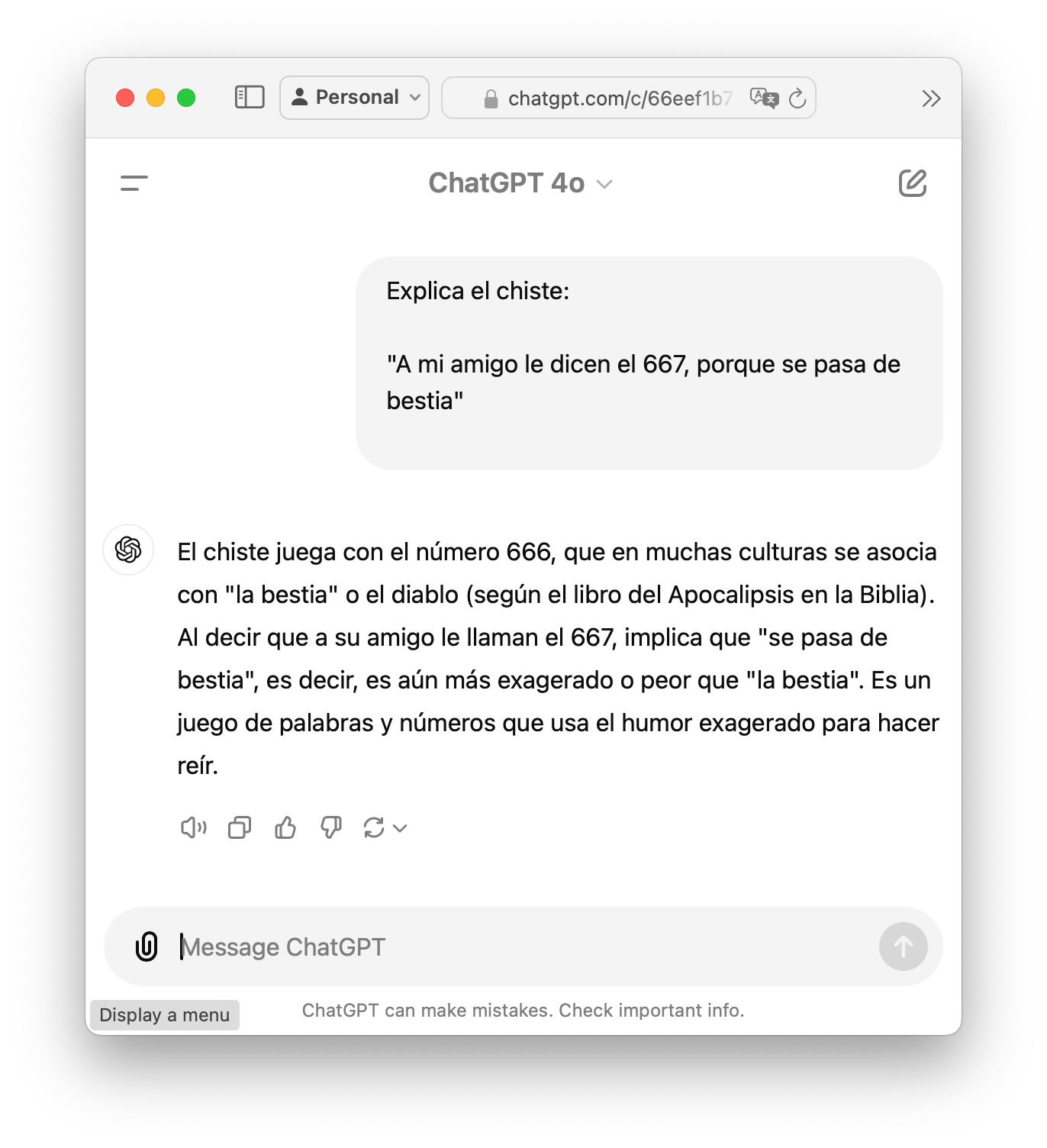When to Start Paying for an AI Assistant
From Beginner to Pro: Finding the Perfect Time to Invest in Your AI Assistant
f you're exploring the world of artificial intelligence, you've probably asked yourself if it's worth paying for an AI assistant like ChatGPT or Claude at some point. It's a common question, and the short answer is: yes, paying for this technology is worth it. But the trickier question is: when should you start paying?
AI assistants usually offer free plans—my favorites, Claude and ChatGPT, certainly do. Naturally, these free plans come with certain limitations, primarily a fixed number of messages that "refreshes" after certain periods. But I don't want to focus on the specific details of these limitations. Why not? Because they change frequently, and honestly, they're not the most important factor in deciding whether you should start paying.
What really matters is your evolution as an AI user. So let's visualize the user journey, starting with your first steps in the world of AI assistants all the way to the point where you become a regular user. Spoiler alert: that's when you'll probably want to consider opening your wallet.
Here I'll quickly walk you through the phases that an AI user experiences. I'm assuming you've already chosen an assistant (or a couple of assistants) to try, but if you haven't done that yet, check out this post I wrote about the differences between Claude and ChatGPT. And if you're someone who always wants to know a bit more, here's where I discuss the companies behind them: Anthropic vs OpenAI.
Now, let's get started with the user journey!
Phase 1: The Beginner
I remember when I first started using AI assistants. It was right after ChatGPT launched, and I was blown away by how easily I could chat with a computer. I sensed it could transform how we interact with technology, but I honestly had no idea how to use it effectively.
It was like being a child sitting in the driver's seat of a parked car, happily pressing all the dashboard buttons and spinning the steering wheel—but of course, the car doesn't move because it's just play. You probably feel the same way:
You ask basic questions: "What's the capital of France?" or "What's 2+2?"
You experiment with random prompts: "Write a reggaeton song about a space cat"
You're impressed with the responses, but you're not quite sure how they'll fit into your everyday life.
At this stage, the free plan is more than enough. You're still learning, exploring, and probably only using the assistant occasionally. There's simply no reason to pay for something when you haven't yet figured out how to get the most value from it.
Phase 2: The Enthusiastic Learner
As time goes by, you begin to glimpse the true potential of these tools:
Your prompts improve: You don't just ask basic questions anymore—you provide context and specify exactly what you need. You start having actual conversations with the AI
You discover new uses: From drafting emails to brainstorming project ideas
You begin weaving AI into some of your everyday tasks
This is where things get interesting. You're learning to "speak the language" of AI—formulating your questions more effectively. You might occasionally bump into the limits of the free plan, but it's not a regular frustration yet.
Phase 3: The Regular User
Now we're getting to the good stuff—things start to get a little more serious:
You've significantly leveled up your prompting skills: You're comfortable with several prompting techniques
AI has become an integral part of your workflow: You regularly use it for brainstorming, analysis, writing, and more
You're exploring more advanced applications: Maybe you're experimenting with content creation, data analysis, or code generation
At this stage, you're likely bumping into the free plan's limitations quite frequently. Your prompts have become longer, more complex, and demand more processing power. This is the point where you really start feeling the need for more capabilities (and where I recommend making the jump to a pro plan).
Signs You're Ready to Make the Jump
How can you tell if you've reached this point? Here are some clear signals to watch for:
Frequency of use: If you find yourself opening Claude, ChatGPT, or your favorite assistant multiple times daily as a regular part of your routine, that's a strong indicator.
Complexity of your tasks: Your prompts have evolved beyond simple questions into detailed instructions for sophisticated tasks.
Frustration with limitations: You frequently catch yourself waiting for your usage quota to reset or wishing you could continue a conversation that hit its limit.
Perceived value: You can specifically point to ways the AI assistant is boosting your productivity or improving your work quality.
Specific needs: You've developed use cases that require advanced features like document analysis, image generation, and other premium capabilities.
The Benefits of Waiting for the Right Moment
You might be wondering: "Well, if I'm going to end up paying anyway, why not just do it from the start?" That's a great question. Here's why patience pays off:
Maximizing value: By waiting until you truly need those premium features, you ensure you're getting the most bang for your buck.
Gradual learning: The free plan's limitations actually force you to become more creative and efficient with your prompts—a valuable skill that will serve you well even after upgrading.
Avoiding waste: Paying for advanced features you don't yet know how to use is like buying a Formula 1 race car... just to drive to the grocery store.
Real appreciation: When you finally make the upgrade, you'll appreciate the additional capabilities so much more because you'll know exactly how to take advantage of them.
My Personal Experience
Let me share my own journey with you. When I first started using ChatGPT, I was absolutely fascinated. I spent hours playing around with it, asking all sorts of random questions and being amazed by the responses. At one point, I even tested it by sharing a joke from "Melcochita" (a famous Peruvian comedian) just to see if it could understand the humor:
It was definitely fun to play with AI this way, but I wasn't really leveraging its power in my daily work yet.
It was only after maaaaany weeks of consistent use that I finally started to see how I could integrate it into my daily life. I began using it to review article ideas, help structure my presentations, and even to review and improve my Python code.
Eventually, I decided to pay for the Pro version, though I honestly don't remember exactly when that happened—it might have been a bit of an impulse purchase. Looking back, I think for the way I was using it at that time, I probably could have waited a couple more months. In the end though, I have no regrets—these days I maintain Pro accounts for both Claude and ChatGPT, and they've become essential parts of my daily routine.
Beyond Payment: How to Keep Improving
Paying for an AI assistant isn't the finish line—it's actually the starting point of a whole new phase in your journey. Here are some ways to continue leveling up your AI skills even after upgrading:
Experiment with advanced prompting techniques: Explore methods like "in-context learning" or "chain-of-thought" reasoning to get more sophisticated results.
Combine AI with your existing toolkit: Integrate your AI assistant with your other apps and workflows to create powerful combinations.
Stay on top of developments: These AI models are evolving at lightning speed. Keep an eye on new features and capabilities as they emerge (you can always subscribe to this newsletter. Do people still say "blog" these days?)
Connect with other users: Join online communities where people share their best tips and tricks. Sometimes the most valuable insights come from seeing how others are putting these tools to work.
Your Journey, Your Decision
At the end of the day, deciding when to pay for an AI assistant is a personal choice that depends on your unique situation. There's no golden rule saying "after X days of use, you should upgrade." It's about recognizing that moment when the tool becomes so valuable that the free plan's limitations start holding back your productivity and creativity.
Here's my advice: focus on building your AI interaction skills first. Learn how to craft effective prompts, figure out ways to weave AI into your workflow, and explore all kinds of different applications (yes, even sharing jokes with it 😅). The right time to pay will come naturally—you'll feel it when you've simply outgrown what the free plan can offer.
Remember, while AI is an incredibly powerful tool, it's your creativity and ability to use it effectively that truly makes the difference. Whether you're using the free or premium version, what really matters is that you're getting the most out of this amazing technology.
What about you? Where are you in your AI journey? Have you considered upgrading to a paid assistant, or are you still exploring what the free plan has to offer?
Drop me a comment—I'd genuinely love to hear about your experience.
See you soon!
G
Hey! I'm Germán, and I write about AI in both English and Spanish. This article was first published in Spanish in my newsletter AprendiendoIA, and I've adapted it for my English-speaking friends at My AI Journey. My mission is simple: helping you understand and leverage AI, regardless of your technical background or preferred language. See you in the next one!






